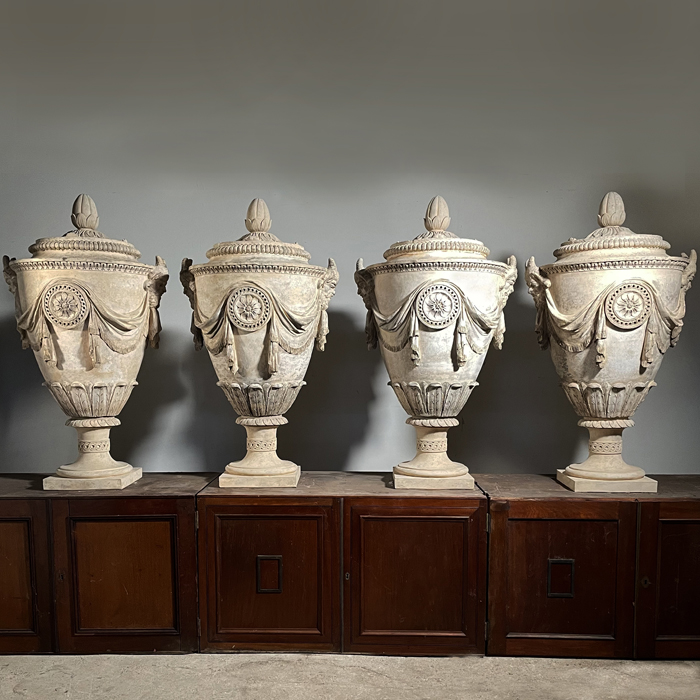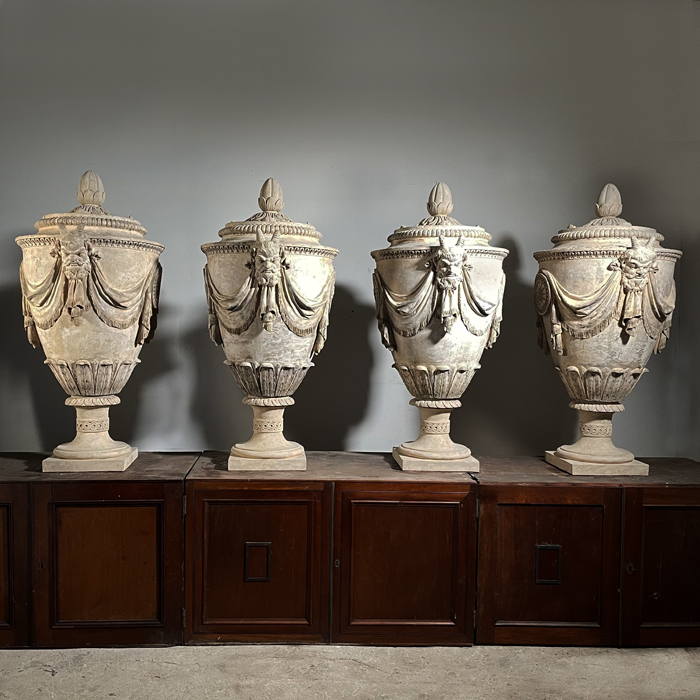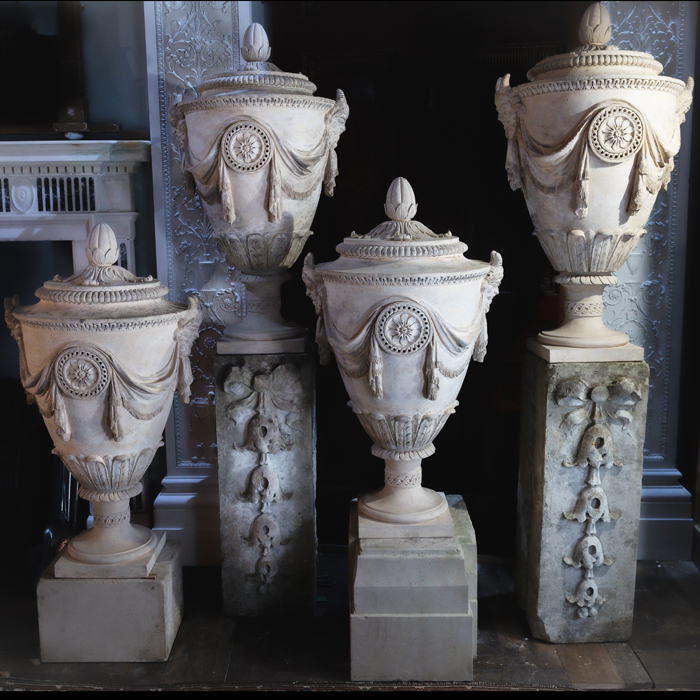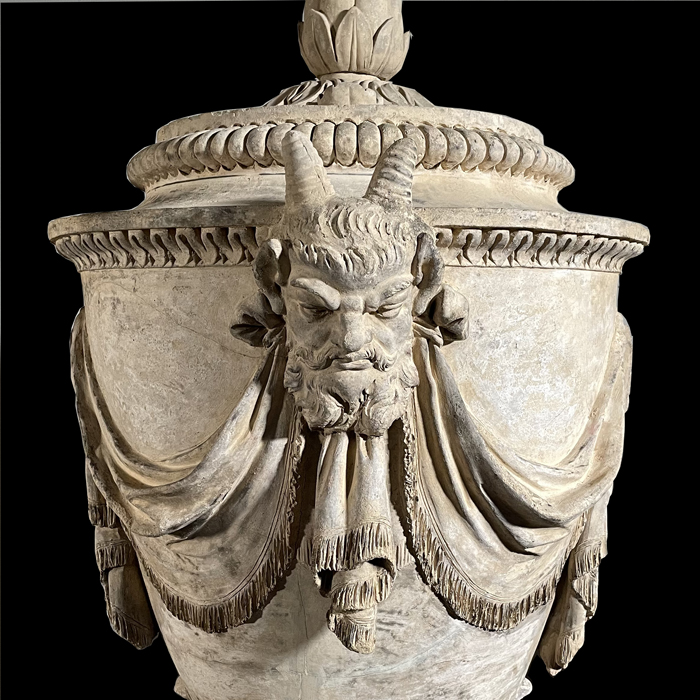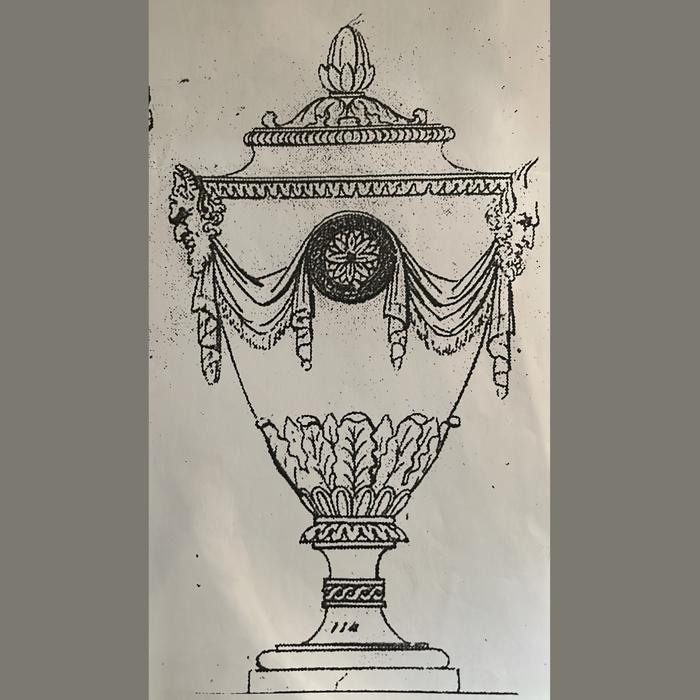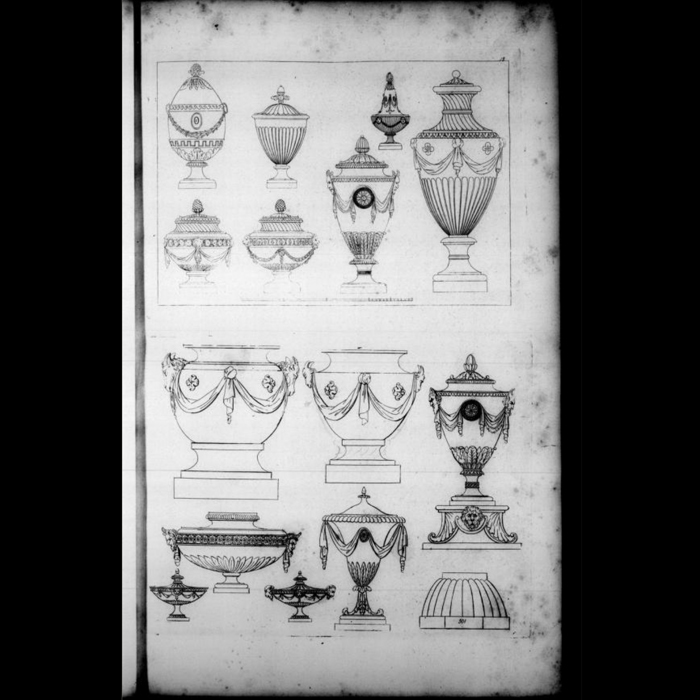No products in the basket.
An important set of four George III Coade Stone Urns
c.1774, designed by John Bacon at Eleanor Coade's Manufactory for The Temple of Friendship at Harleyford House, Buckinghamshire
each tapered lidded vase, with lambrequin mouldings to the top edge and an acanthine moulded lid with an acorn top-finial, above the body wrapped with relief ornament comprising a circular flowerhead boss to each principle face, swagged with tasseled drapery from the bearded fawn masks, all raised on a socle foot, [restorations: feet and lids replaced]
POA
These fabulous urns are rare; so rare as to be considered important survivors.
Not only are they made at Eleanor Coade’s Manufactory in Lambeth, in around 1774, the heyday in the early years of that illustrious workshop, but we have a set of four (they came from a set of eight). They are designed by John Bacon (1740-99) who had come to work for Coade in 1769 and was responsible for the finest sculptural work that they were to produce. The urns are exactly 250years old and in a testament to the famous durability of Coade’s “Lithodypyra” (twice fired stoneware) – made to her perfected recipe and method – they have been out in the English weather for all of that time. Given that they were high on a parapet for most of it, they are in remarkably good condition – we have restored them, but the detail is still as crisp as the day it was fired. Read the full story here.
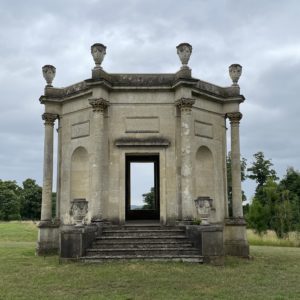
The urns were commissioned in 1772 by Rev. Dr. John Thomas, Dean of Westminster and Bishop of Winchester, to top-off his “Temple of Friendship” built in the grounds of Harleyford House found in a beautiful spot on a curve in the Thames – just up-river from Marlow in Buckinghamshire. John Thomas – who had become the Bishop of Rochester by the time the Temple was finished in 1775 – left the building as a perpetual mark of his bond with William Clayton (1718-83) the owner of Harleyford House. Clayton, his elder brother Kenrick, and their father Sir William Clayton had propelled Thomas into an illustrious career in the Church. The friendship had been cemented in 1738 when John Thomas had married Anne – William and Kenrick’s elder sister.
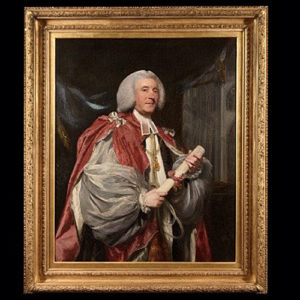
The beautifully composed temple, octagonal in plan, with ashlar covered brick, and a smart doorcase gained by stone steps above a crypt, was all paid for by John Thomas. Whilst it is known as “The Temple of Friendship”, its form, and its context within the landscape, a landscape that was reputedly modelled for the Claytons by Launcelot “Capability” Brown, points to another significant purpose. That the Temple was begun in the year that his wife Anne died – in a brief period in the mid-eighteenth century when such buildings were being built in country estates – indicates that “The Temple of Friendship” was styled as a Mausoleum, even if it never served as such.
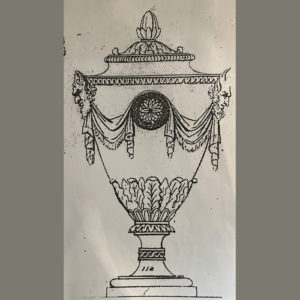
There is remarkably little record of the “Temple of Friendship” although it still stands. For any estate that has had a period of decline – and Harleyford is not alone in that – garden temples and parkland buildings do have a tendency to be swallowed up in the trees. With restoration of the building, and recent clearing of the woods around it, the temple has emerged into the sunlight and now finds itself alongside a golf course. Even Nikolaus Pevsner seems to have missed it when he swung past in his Morris Minor in 1960; in his “Buildings of England, Buckinghamshire” it reads like he was aware of a temple in the grounds but didn’t ever set eyes on it (and he got the name wrong).
And there seems to be remarkably little record of The Rev Dr. John Thomas himself either, despite his illustrious career. As the current Dean of Rochester Cathedral comments “he’s a bit of a mystery” yet, at the time of writing, his full-length portrait by Sir Joshua Reynolds, that has remained in private hands for two centuries, has emerged on loan and is hung in Rochester Cathedral (until April 2024). A monument to John Thomas’ long life (he died aged 81 in 1793) can be found in Westminster Abbey in the form of a marble bust. The sculptor who carved it was none other than John Bacon who made the urns for him at Eleanor Coade’s workshops forty years previously.
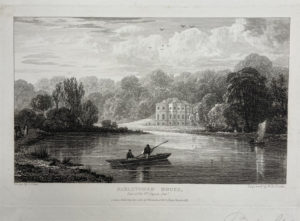
All of the above is expanded on in LASSCO News – our website Blog.
Click Here for the Full Story.

